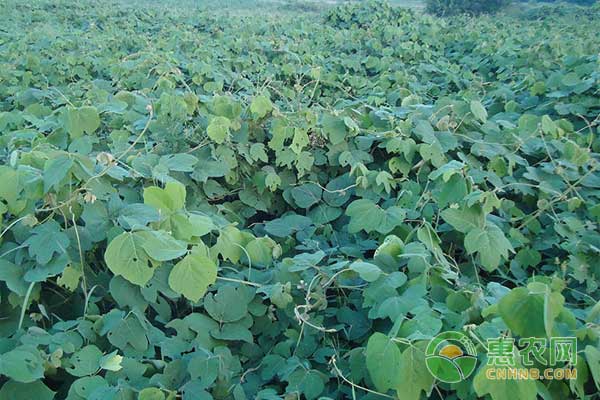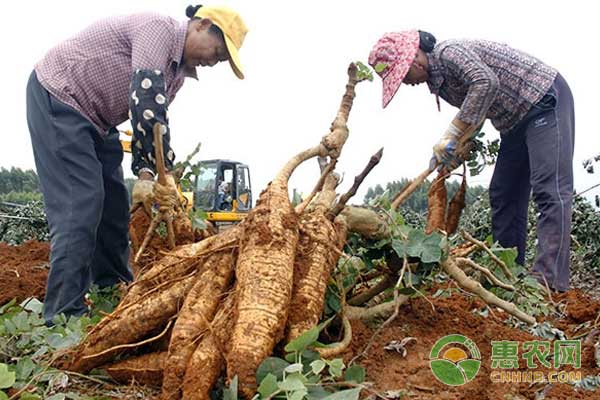Pueraria lobata is an edible edible rhizomes of the genus Gypsophila. Pueraria is still a common Chinese herbal medicine, with the effects of relieving muscle fever, thirst, thirst, and diarrhea. Pueraria cane can be twisted with rope, woven fabric, or used for papermaking. The leaves of Pueraria can be used for feeding poultry and livestock, so Pueraria has a high planting value. Here is a look at the pueraria seedlings and planting techniques!
First, how does Gegen seedlings?
1, seedbed preparation
Choose a mountain or garden where leeward sun, sandy soil, and no livestock are harmful. The bed of the seedling bed is 15-20 cm high and the ridge width is 60-100 cm. The length is not limited. Each square meter of fermented manure or soil fertilizer is 1.5-2.5 kg. Deeply flattened, the middle of the seedbed is slightly raised, and the grooves on both sides are 20-30 cm wide.
2, seed operation
Before seeding, the seedbed should be fully moistened. The fine cultivar of the genus Gypsophila should be selected as a species with a shoot bud. The buds are cut into 6-10 cm segments and scattered on a good seedbed to avoid Overlap, cover 2-3 mm thick fine soil, in principle, reach the looming, then apply some decomposed manure, then cover a layer of straw, use 2 meters of bamboo or small bamboo strips, insert into the arch on the seedbed, Insert one every 35 cm. Cover the agricultural film, the seedbed is completely covered with arches, and the surrounding is compacted with soil.

3, seedbed management
Due to the low temperature during the nursery period, the water consumption of the strips is not large. If the ridges are dry for about 10 days, they can be watered once. After planting the roots, the water needs to be increased appropriately, and water is poured every 3 days to keep the seedbed fully moist. The temperature of the seedbed is preferably around 20 °C. When the temperature reaches 30 °C or above, the film should be ventilated or sprayed to adjust the temperature. When the seed is germinated, the covered straw should be uncovered to avoid direct sunlight, and the sun should be properly shaded at noon to prevent burns. Seedlings grow 3 shoots of twigs, and when the length is 5 cm, they can carry out soil-lifting, and the seedling movement should be light to avoid injury.
Doing a good job in the seedling cultivation of Pueraria is the basis for the successful cultivation of Pueraria. Here is a brief introduction to the planting technique of Pueraria.
Second, how to plant Pueraria?
(1) Planting time of Pueraria
The best colonization period of Pueraria is from mid-to-late March to early April (noon temperature is not lower than 10 °C), and the seedlings (with roots) or seedlings (including 2 stems without roots) are 30 degrees from the ground. Slanted into the soil. Note that the growth point at the stem section of the seedling must be exposed to the soil; the two stem sections of the seedling must be in the soil and one section outside the soil.
(2) Pueraria planting method
1. Site selection: Pueraria planting chooses well-drained plots, which are 30 cm deep before winter, combined with ploughing and cultivating 2000-3000 kg of farmer's fertilizer per acre, evenly turning into the soil, and turning over again in the spring of the year, breaking the clods耙 耙 耙 , , , , , , , , , , , , , , , , , , , , , , , , , , , , , , , , , , , , , , , , , , , , , ,
2. Seed reproduction: Before and after the spring clearing, the seeds are soaked in warm water of 40 °C for 1-2 days, and often stirred. After taking out the dried water, the seeds are planted in the middle of the whole sorghum, the depth of the hole is 3 cm, and the plant spacing is 35- 40 cm, 4-6 seeds per hole, sowed after the sowing, watering, about 10 days to emerge.
3. Interplanting and weeding: Pueraria lobata grows faster, except for the second grass before germination in early spring, and then the second grass can be removed after the autumn fall leaves. Generally, weeding is not required in the growing season.

4. Reasonable topdressing: It can be combined with cultivating and weeding. After returning to green, the application of green manure is mainly based on manure water. The application of 1000 kg per acre can be properly applied with urea, and the winter fertilizer after defoliation is mainly based on farmyard manure. The annual growth period can be combined with watering, and a small amount of potassium fertilizer can promote root growth.
5. Timely scaffolding: Pueraria cultivation must be framed, and a wooden column can be set every 2-3 meters between the two rows. The columns are connected by wires, and the bamboo poles or iron wires are tied between the rafts and the rafts to facilitate climbing. When the seedling height is 30 cm, the vine can be put on the shelf.
6. Pruning: During the growing season, the growth of stem vines should be controlled, and the top buds should be removed to reduce nutrient consumption. The plant shape should be properly adjusted to make full use of sunlight, and the vines and sick branches should be cut off in time.
7. Control of diseases: There are not many diseases of kudzu. In the growing season, there are mainly pests such as cockroaches and chafers.蟋蟀Can be sprayed with 80% dichlorvos EC 200 times solution, and the chafer is sprayed with 90% crystal trichlorfon 1000 times liquid in May-June, and other pests can be controlled with dimethoate and insecticide.
8. Harvesting and processing: The cultivated kudzu can be harvested in the late autumn or early winter of 2-3 or before the early spring. Dig all the roots when digging, remove the stems and roots, scrape off the rough skin, cut into small pieces of about 10 cm, cut into strips about 5 cm thick, and then dry them with water or dip with 2% lime. Yes. It is better to use white, powder and no mold.
Pueraria has a high planting value and can be widely planted. It is one of the rare projects for farmers to get rich!
Cotton Tipped Swabs,Medical Cotton Swab,Cotton Swab Medical Use,Medical Grade Cotton Swabs
Henan Anbang Medical Supplies Co., Ltd. , https://www.anbangmedical.com